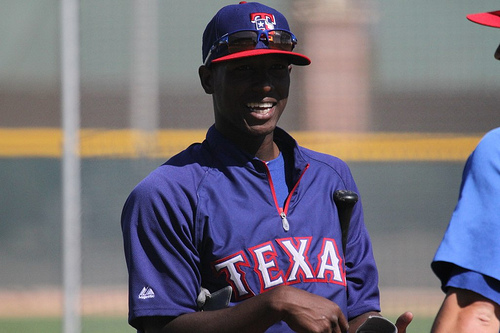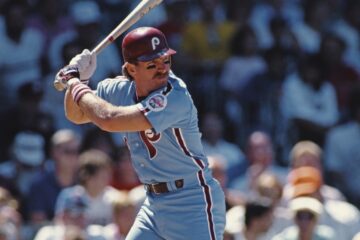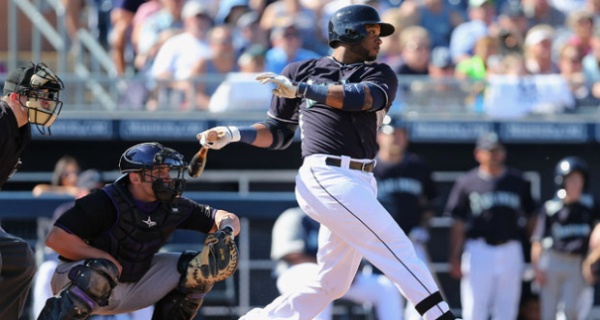2017 Fantasy Baseball: The Fielding Chronicles– Texas Rangers

The 2016 Texas Rangers were a statistical anomaly. Their Pythagorean record came in at a paltry 82-80, but they finished at 95-67. That is plus 13 wins for the math impaired. They were plus five games the season before. This is where your perspective dictates how we move forward. Positive thinkers would believe they’ve discovered a way to get the most of out what they have. Negative thinkers simply think that their luck is about to run out.
Sometimes fielding can be a part of the explanation of how teams overachieve or underachieve. Often, a team’s ability to consistently overachieve depends on management’s ability to recognize that they overachieved in the first place. Executives are getting more and more savvy to numbers with each passing year and Jon Daniels is one of the new wave of young general managers that know these things. The question though is whether he did enough to stave off the ravishing of karma.
We are looking at fielding according to defensive runs saved by the Fielding Bible. We can find that information at billjamesonline.com. The site has information about individual players and team data broken down by position. We will compare that data with the defense efficiency rating from baseball-reference.com.
Team Overview
| Infield | Outfield | Shifts | Total | Rank | DER | Rank | |
| 2014 | -39 | -5 | +12 | -32 | 11th | .675 | 12th |
| 2015 | +10 | -9 | +12 | +13 | 9th | .687 | 12th |
| 2016 | +10 | -11 | +10 | +9 | 9th | .692 | 6th |
Okay, it’s smoke and mirrors. The Rangers Fielding was in the upper echelon of the league according to DER. DER measures the percentage of balls in play that get converted into outs. So, the Rangers get to more balls than most, but defensive runs saved model has them as below average. So either, their pitchers consistently get more weak contact than their counterparts or the Rangers have been lucky the past two seasons.
Cole Hamels and Yu Darvish are special pitchers, but they are virtually the only special pitchers on the staff. The rest of the staff (including the bullpen) is not spectacular, so unless there are some changes to individual fielders we can expect the Rangers to move back to the pack defensively as well as in other areas.
Strongest Fielder
In what is surely a sign of the team’s changing fortunes is the fact that their strongest defender (and arguably best overall player) is on the shelf until May. Adrian Beltre has been plus 42 runs over the past three seasons and is finishing up a career that will likely put him among the top five third basemen in the history of the game. A strained calf has him on the shelf and he reinjured it this past week. Aging players often have difficulty recovering from injuries.
Fortunately, they have former top rated shortstop Jurickson Profar to fill in why they wait for him to get healthy. Additionally, they penciled in Joey Gallo as the new designated hitter, but he also has some experience playing third base in the minors. Obviously, neither are as good as Beltre with the glove.
Weakest Defender
This one was a close call, but the nod goes to Rougned Odor by a nose. Everyone outside of Arlington dislikes Odor because he is a hot dog, but fantasy owners love his awesome power. Unfortunately, he is not the player overall that people seem to think he is. He is a drag in six category leagues and his win totals (WAR) are not nearly what people think. He has been minus 27 runs the past three seasons defensively. Shin Shoo Choo was a late cut from this category because a lot of his problems (minus 27 runs) came when he played center field for the Reds. He only played that position one year and he will never play it again.
Key Changes
Officially, the Rangers only made one change in the offseason. They added Mike Napoli to play first base after Prince Fielder was forced to retire early. They let Mitch Moreland leave via free agency to go to the Red Sox, so Napoli will be plugged into first base for at least this next season. He has been essentially neutral at the position over the past couple of seasons.
The closest thing we can find to a second change is the re-signing of Carlos Gomez to play center field full time. The performance of Gomez with the bat and glove will go a long way in determining where they are as a team. Mind you, no one expects him to be a star, but if he can rebound some then the Rangers have a chance to compete again. If he plays like he did the past couple of seasons then they are in some serious trouble.
He was plus 32 runs in 2013 when he was with the Brewers, but he has been average defensively since then. Some have wondered whether Gomez was properly motivated defensively. Others wonder whether his skills have eroded to the point where he is now. 2017 will be the ultimate judge of that.
The Pitchers
The Ballpark at Arlington (as I will always call it) is not a place for fly ball pitchers. So, the first thing we do is look at the basic ground ball data to determine which pitchers will have the most success. Three of the four key starters have ground ball rates well above the league average. Martin Perez is the pitcher that stands most to gain by good infield defense behind him. He has a 56 percent ground ball rate over the past three seasons. Cole Hamels and Andrew Cashner also have solid ground ball rates, so they should do okay.
On the flip side, Yu Darvish has a high fly ball rate (40 percent ground ball rate) so he has to rely on heavy strikeouts and good outfield defense to get by. However, even good outfield defense cannot overcome the home run ball. He still was worth drafting high because of the strikeouts, but he might not be quite as good over the long haul as people might think.




